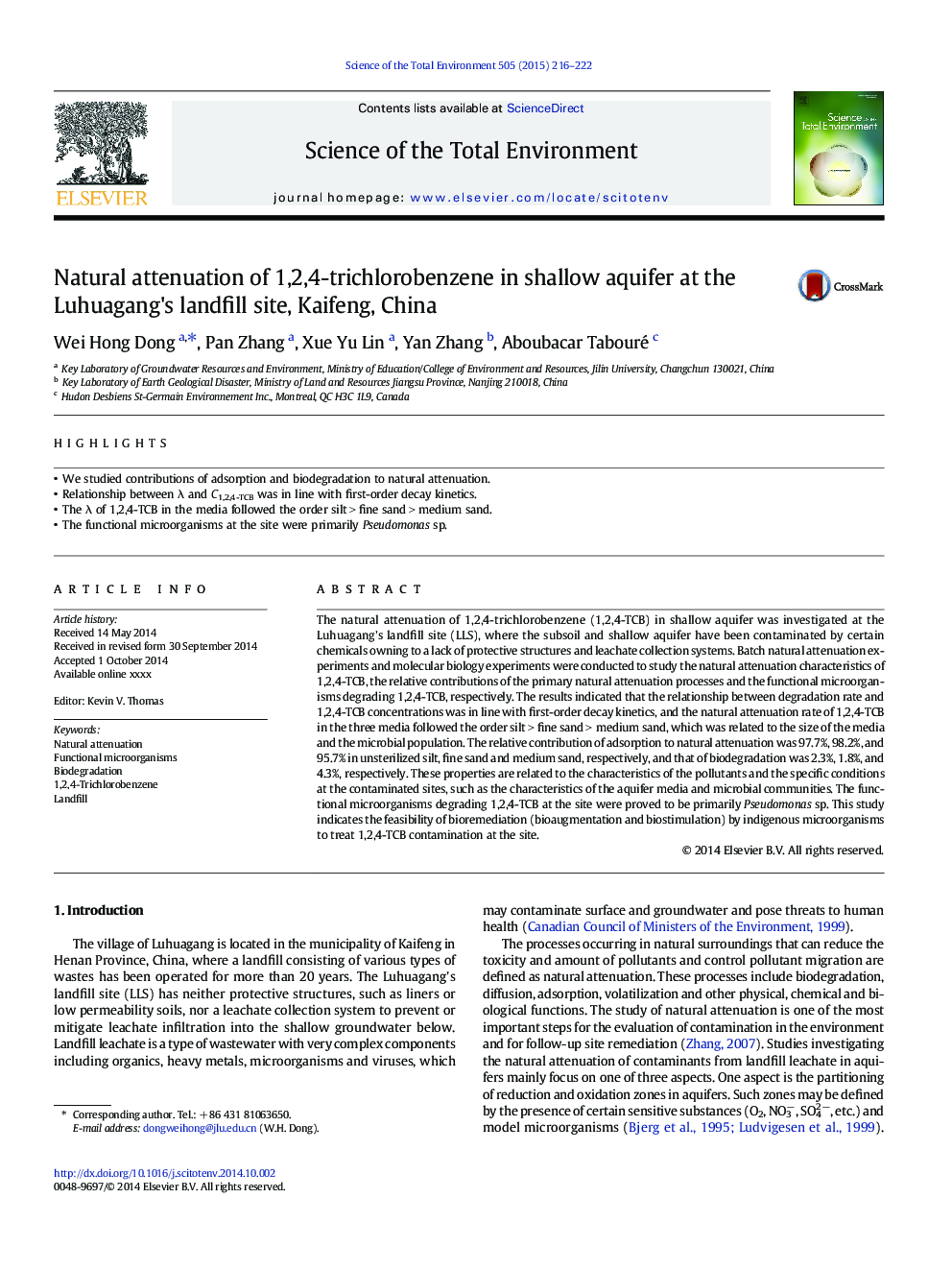| Article ID | Journal | Published Year | Pages | File Type |
|---|---|---|---|---|
| 6328005 | Science of The Total Environment | 2015 | 7 Pages |
Abstract
The natural attenuation of 1,2,4-trichlorobenzene (1,2,4-TCB) in shallow aquifer was investigated at the Luhuagang's landfill site (LLS), where the subsoil and shallow aquifer have been contaminated by certain chemicals owning to a lack of protective structures and leachate collection systems. Batch natural attenuation experiments and molecular biology experiments were conducted to study the natural attenuation characteristics of 1,2,4-TCB, the relative contributions of the primary natural attenuation processes and the functional microorganisms degrading 1,2,4-TCB, respectively. The results indicated that the relationship between degradation rate and 1,2,4-TCB concentrations was in line with first-order decay kinetics, and the natural attenuation rate of 1,2,4-TCB in the three media followed the order silt > fine sand > medium sand, which was related to the size of the media and the microbial population. The relative contribution of adsorption to natural attenuation was 97.7%, 98.2%, and 95.7% in unsterilized silt, fine sand and medium sand, respectively, and that of biodegradation was 2.3%, 1.8%, and 4.3%, respectively. These properties are related to the characteristics of the pollutants and the specific conditions at the contaminated sites, such as the characteristics of the aquifer media and microbial communities. The functional microorganisms degrading 1,2,4-TCB at the site were proved to be primarily Pseudomonas sp. This study indicates the feasibility of bioremediation (bioaugmentation and biostimulation) by indigenous microorganisms to treat 1,2,4-TCB contamination at the site.
Related Topics
Life Sciences
Environmental Science
Environmental Chemistry
Authors
Wei Hong Dong, Pan Zhang, Xue Yu Lin, Yan Zhang, Aboubacar Tabouré,
